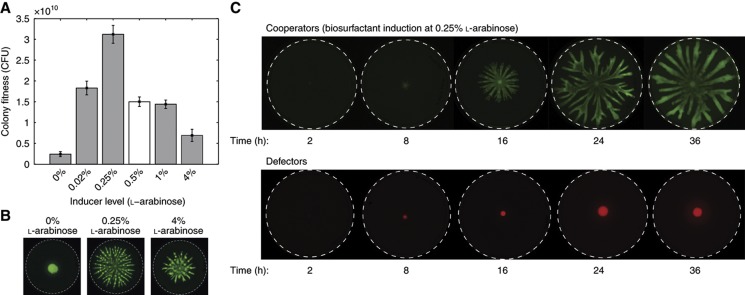Figure 2.
Cooperative swarming allows Pseudomonas aeruginosa colonies to expand over large areas. (A) Swarming requires the secretion of biosurfactants. In colonies of the inducible cooperator, fitness peaks at L-arabinose 0.25%, a level at which biosurfactant production is high enough for swarming expansion but low enough that its costs do not overwhelm the benefit of spatial colony expansions. The data point at 0.5% L-arabinose (white bar) comes from a previous study (Xavier, 2011a); all other data (gray bars) were acquired in the present study. CFU = colony forming units. (B) Images of swarming colonies. Dashed line represents the edge of Petri dish with 9 cm diameter. (C) Cooperators (biosurfactant producers induced by 0.25% L-arabinose) expand over the entire Petri dish. Defectors (rhamnolipid-deficient knockouts) are incapable of swarming and the colonies grow less.

